Kites, "Royal Paint With the Metallic Gardener From The United States of America Helped Into an Open
- Administrator
- Albums and Singles
 2003 ended too abruptly for me to get in a review or even a mention ofwhat has slowly become my favorite noise record of that year, thusnamed because it resists any academic sub-classification, remaininghighly listenable, though irreducible. The delay was due, ironically,to my inability to describe Royal Paintwithout making it sound entirely derivative. I could compare Mr. Kites,whoever this solitary and staunchly anti-technologian (no computers,keyboards, effects) abuser of arcane electronics may be, to Amps forChrist as he does incorporate his share of garbled folk and naïve popreferences. It would be easy, also, to write about the layered enginedrones that characterize several tracks, and while these are impressivein their assemblage, and charming by way of a persistentone-dimensionality, there is nothing to make Kites stand out against somany artists who've treated the same sounds to more elaborate, deeplyinvolved investigations. Kites' exploits the code of homemade ethics bydismissing obsolete technologies that even the most whitebread ofDIY-ers have grown to accept, but he does this without coming off likethe Jandek of his particular niche. Royal Paint includes someof the blind Jandekian resilience, but it's also a compelling listenthroughout, neither in spite nor because of its simplicity. Thenine-minute opener, "Staring into the Sun," works as a kind ofpurifying ritual, a screaming match between feedback generator andprickly static (Kites' weapons of choice), my ears as helplessmediators. Seven minutes in and the disc's ragged logic begins to takeshape; these fluctuations and skewed intervals trace the skeleton of apop song. The following three tracks, moving from a neo-pagan campfirestomp through a bit of faux-Celtic acoustic plucking with a few sheetsof white noise to cleanse the palette, only support my suspicions; thesongs offer the directness of pop with none of its easy rewards. Whilelabelmates Hair Police use traditional instruments to destroy the"song" from the inside-out, Kites works through his own bizarreprimitivism to reconstruct it. This is not noise for noise's sake. Thecomfortable or recognizable moments on Royal Paint do not allowfor a sarcastic tone or some humorous bent, dampening the truly painfulparts, of which there are many. The occasional sing-a-long bit andmelodic tinkering set up bizarre juxtapositions to make their shrillcounterparts seem more complex and hard to ignore. It might seem easyto dismiss Kites as just one more jaded punk cashing in on the homemaderenaissance, but Royal Paint gives this "simple" music a colorful and intimidating face.
2003 ended too abruptly for me to get in a review or even a mention ofwhat has slowly become my favorite noise record of that year, thusnamed because it resists any academic sub-classification, remaininghighly listenable, though irreducible. The delay was due, ironically,to my inability to describe Royal Paintwithout making it sound entirely derivative. I could compare Mr. Kites,whoever this solitary and staunchly anti-technologian (no computers,keyboards, effects) abuser of arcane electronics may be, to Amps forChrist as he does incorporate his share of garbled folk and naïve popreferences. It would be easy, also, to write about the layered enginedrones that characterize several tracks, and while these are impressivein their assemblage, and charming by way of a persistentone-dimensionality, there is nothing to make Kites stand out against somany artists who've treated the same sounds to more elaborate, deeplyinvolved investigations. Kites' exploits the code of homemade ethics bydismissing obsolete technologies that even the most whitebread ofDIY-ers have grown to accept, but he does this without coming off likethe Jandek of his particular niche. Royal Paint includes someof the blind Jandekian resilience, but it's also a compelling listenthroughout, neither in spite nor because of its simplicity. Thenine-minute opener, "Staring into the Sun," works as a kind ofpurifying ritual, a screaming match between feedback generator andprickly static (Kites' weapons of choice), my ears as helplessmediators. Seven minutes in and the disc's ragged logic begins to takeshape; these fluctuations and skewed intervals trace the skeleton of apop song. The following three tracks, moving from a neo-pagan campfirestomp through a bit of faux-Celtic acoustic plucking with a few sheetsof white noise to cleanse the palette, only support my suspicions; thesongs offer the directness of pop with none of its easy rewards. Whilelabelmates Hair Police use traditional instruments to destroy the"song" from the inside-out, Kites works through his own bizarreprimitivism to reconstruct it. This is not noise for noise's sake. Thecomfortable or recognizable moments on Royal Paint do not allowfor a sarcastic tone or some humorous bent, dampening the truly painfulparts, of which there are many. The occasional sing-a-long bit andmelodic tinkering set up bizarre juxtapositions to make their shrillcounterparts seem more complex and hard to ignore. It might seem easyto dismiss Kites as just one more jaded punk cashing in on the homemaderenaissance, but Royal Paint gives this "simple" music a colorful and intimidating face.Read More
- Administrator
- Albums and Singles
 Songs of Norway is the duo of Aaron Moore and Nick Mott of Volcano TheBear. The two musicians actually formed six months before the formationof the Bear in 1995, though they have just now gotten around toreleasing their first album. For their debut LP Despite the Cloakon the Beta-Lactam Ring label, Moore and Mott employ their intuitionfor improvisation across seven tracks of minimal free music, utilizingguitar, violin, trumpet and assorted percussion. "Good Morning GreatLegend" is filled with atonal pulls of the bow which bend, curve andswoop unpredictably while randomly struck gongs and drums form apercussive response, of sorts. On "Miles of Beef," the mosquito buzz ofthe violin flits ponderously over Moore's senseless drums, until thetrack takes a sharp left turn into primitive scrapings and tumblingfound percussion. This willfully messy non-formula continues for theduration of the album. Sometimes, as on "Would I Witness CrustaceanEvolve," the players seem genuinely collaborative and theirconversations yield interesting results, but the overwhelming majorityof Despite the Cloak sounds disparate, as if the Moore and Mottwere completely ignoring each other, each trying to voice their ownseparate agendas. "Leopard Hairs" adds weird esoteric textures with oddwhispers and the vibrating aumgns of guest Stewart Brackley, who alsocontributes double bass and trumpet to a few other tracks. DanielPadden's clarinet adds interest to "Inner Arms and Necks" which takes afew minutes to get anywhere, and when it does finally arrive, I wasforced to ask myself if the wait was really worth it. "PartridgeCarnival" ends the disc with Aaron Moore's high-speed drumming, whichrolls energetically while Nick Mott attempts to coax some DerekBailey-isms out of his strings. While Despite the Cloak mightappeal to hardcore improv enthusiasts, I couldn't be more indifferentabout it. I realize that free playing has a built-in defense againstaccusations that it lacks melody or harmonic sense, but Songs ofNorway's purposeful unpredictability is all too predictable. As a duo,Moore and Mott lack that essential spark of collaborative energy anddramatic compositional intuition that makes Volcano The Bear's music soimpressive. It's the same problem that I find in a lot of new musicgoing under the banner of "free music" or "free folk" — groups such asSunburned Hand of the Man, No Neck Blues Band and Jackie-O Motherfucker— I sometimes get the nagging sensation that these musicians justaren't trying very hard.
Songs of Norway is the duo of Aaron Moore and Nick Mott of Volcano TheBear. The two musicians actually formed six months before the formationof the Bear in 1995, though they have just now gotten around toreleasing their first album. For their debut LP Despite the Cloakon the Beta-Lactam Ring label, Moore and Mott employ their intuitionfor improvisation across seven tracks of minimal free music, utilizingguitar, violin, trumpet and assorted percussion. "Good Morning GreatLegend" is filled with atonal pulls of the bow which bend, curve andswoop unpredictably while randomly struck gongs and drums form apercussive response, of sorts. On "Miles of Beef," the mosquito buzz ofthe violin flits ponderously over Moore's senseless drums, until thetrack takes a sharp left turn into primitive scrapings and tumblingfound percussion. This willfully messy non-formula continues for theduration of the album. Sometimes, as on "Would I Witness CrustaceanEvolve," the players seem genuinely collaborative and theirconversations yield interesting results, but the overwhelming majorityof Despite the Cloak sounds disparate, as if the Moore and Mottwere completely ignoring each other, each trying to voice their ownseparate agendas. "Leopard Hairs" adds weird esoteric textures with oddwhispers and the vibrating aumgns of guest Stewart Brackley, who alsocontributes double bass and trumpet to a few other tracks. DanielPadden's clarinet adds interest to "Inner Arms and Necks" which takes afew minutes to get anywhere, and when it does finally arrive, I wasforced to ask myself if the wait was really worth it. "PartridgeCarnival" ends the disc with Aaron Moore's high-speed drumming, whichrolls energetically while Nick Mott attempts to coax some DerekBailey-isms out of his strings. While Despite the Cloak mightappeal to hardcore improv enthusiasts, I couldn't be more indifferentabout it. I realize that free playing has a built-in defense againstaccusations that it lacks melody or harmonic sense, but Songs ofNorway's purposeful unpredictability is all too predictable. As a duo,Moore and Mott lack that essential spark of collaborative energy anddramatic compositional intuition that makes Volcano The Bear's music soimpressive. It's the same problem that I find in a lot of new musicgoing under the banner of "free music" or "free folk" — groups such asSunburned Hand of the Man, No Neck Blues Band and Jackie-O Motherfucker— I sometimes get the nagging sensation that these musicians justaren't trying very hard. Read More
- Administrator
- Albums and Singles
 Guignol is French for "puppet," and the word is often used to connote aclassical theater form involving large marionettes enacting heroic orcomic tales. It's a name that perfectly describes the music on Angela, David & The Great Neapolitan Road Issue,which is vaguely theatrical, strangely comic, and largely informed byan odd concept involving French instrumentation and dadaist lyricaltactics. Lest we forget, surrealism as an aesthetic, theatrical andliterary movement began in France in the early 1900's, and Guignol'smusic, though modern, seems a bit stuck in this time and place, perhapsbecause it was recorded over a summer in the French countryside. Thegroup is comprised of Jeremy Barnes (of Bablicon), Aaron Moore andLaurence Coleman (both from Volcano The Bear). Assisting on a fewtracks is Aaron Moore's VTB and Songs of Norway cohort Nick Mott, andKorena Pang. It's a mysterious little enigma of an album, seeming atonce intimate and detached. Much of the album seems primitivelyrecorded and loosely improvised, but the beauty and intimacy of Moore'svocals on the opening track "Of Houses and Canals" recalls thefragility of Robert Wyatt's on Rock Bottom. The lyrics aredisjointed and surreal, bringing to mind the spaced-out whimsicality ofsolo Syd Barrett. Much of the instrumentation is minimal, withclattering percussion and warm organ tones. Its idiosyncrasies arebeguiling, and much of the album washes over like a gentle afternoonhallucination. Even the occasional areas of tension and noise seemoddly pastoral. Jeremy Barnes brings with him that same intuition forseemingly accidental psychedelia that has made every Bablicon album soengaging. "Angela and David" and "Discover Guignol's Band" are the sametrack, repeated twice, one after the other, and as strange as thatsounds, it seems rather charming in context. The spare production andcarefully chosen instrumentation lends many of the tracks theatmosphere of medieval France, enhancing the music's anachronistictendencies. Though its charms are ephemeral, Guignol's album is anenticing ambiguity.
Guignol is French for "puppet," and the word is often used to connote aclassical theater form involving large marionettes enacting heroic orcomic tales. It's a name that perfectly describes the music on Angela, David & The Great Neapolitan Road Issue,which is vaguely theatrical, strangely comic, and largely informed byan odd concept involving French instrumentation and dadaist lyricaltactics. Lest we forget, surrealism as an aesthetic, theatrical andliterary movement began in France in the early 1900's, and Guignol'smusic, though modern, seems a bit stuck in this time and place, perhapsbecause it was recorded over a summer in the French countryside. Thegroup is comprised of Jeremy Barnes (of Bablicon), Aaron Moore andLaurence Coleman (both from Volcano The Bear). Assisting on a fewtracks is Aaron Moore's VTB and Songs of Norway cohort Nick Mott, andKorena Pang. It's a mysterious little enigma of an album, seeming atonce intimate and detached. Much of the album seems primitivelyrecorded and loosely improvised, but the beauty and intimacy of Moore'svocals on the opening track "Of Houses and Canals" recalls thefragility of Robert Wyatt's on Rock Bottom. The lyrics aredisjointed and surreal, bringing to mind the spaced-out whimsicality ofsolo Syd Barrett. Much of the instrumentation is minimal, withclattering percussion and warm organ tones. Its idiosyncrasies arebeguiling, and much of the album washes over like a gentle afternoonhallucination. Even the occasional areas of tension and noise seemoddly pastoral. Jeremy Barnes brings with him that same intuition forseemingly accidental psychedelia that has made every Bablicon album soengaging. "Angela and David" and "Discover Guignol's Band" are the sametrack, repeated twice, one after the other, and as strange as thatsounds, it seems rather charming in context. The spare production andcarefully chosen instrumentation lends many of the tracks theatmosphere of medieval France, enhancing the music's anachronistictendencies. Though its charms are ephemeral, Guignol's album is anenticing ambiguity. Read More
- Administrator
- Albums and Singles
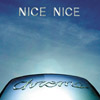 There's nothing more refreshing than being deceived by music. I thoughtit was going to be an electronic-fueled record of funked up rhythms andsome glitched guitar; but it, like a chameleon, slowly changed intoother creatures. There are only two musicians in this band and thereare no overdubs or machines that makes all the fabulous noises. Chromeis a live album of bone-annihilating rhythms, sharp and preciseplaying, and spaced out jams that would make Can and Neu! quite proud."Look, You're On TV" and "Cold Sweat Part XVI" start the album out withsome snappy drum chops and drugged-up guitar playing that fallssomewhere between firmly psychedelic and absolutely jarring. Whatfollows gyrates between cavernous soundscapes and mathematicallydesigned metal screams. It's in the middle, where the drums sound likea steam engine chugging down the line and the strings hum like massivebells, that Nice Nice is most captivating. Sure, there are a widevariety of sounds here and it's amazing that just two guys are capableof doing it all in a live environment, but they both have a knack formelody and rhythmic tension that make jam sessions like "Nein" and "OnNeon" so unrelentingly beautiful. Where Nice Nice stick closest totheir melody and their sense of beauty, they succeed the most. That'snot to say it isn't fun as hell to have my head beat into my shouldersby their wild changes in style, but their ability to craft narcoticmelodies and hypnotic rhythms (see "We Go Towards," especially) standout as their best trait. That being said, Chrome comes awayfeeling like an amazing treat. There's a variety of music here thatfits together well as a record; it's a cohesive experience withoutfeeling dull or repetitive and yet it manages to move between sonicallyopposite poles. If two people can make such a variety of music on thesame record without sounding too scattered, it leaves me wondering whatall these other duos are doing with their silly guitar solos andamateurish rhythmic capabilities.
There's nothing more refreshing than being deceived by music. I thoughtit was going to be an electronic-fueled record of funked up rhythms andsome glitched guitar; but it, like a chameleon, slowly changed intoother creatures. There are only two musicians in this band and thereare no overdubs or machines that makes all the fabulous noises. Chromeis a live album of bone-annihilating rhythms, sharp and preciseplaying, and spaced out jams that would make Can and Neu! quite proud."Look, You're On TV" and "Cold Sweat Part XVI" start the album out withsome snappy drum chops and drugged-up guitar playing that fallssomewhere between firmly psychedelic and absolutely jarring. Whatfollows gyrates between cavernous soundscapes and mathematicallydesigned metal screams. It's in the middle, where the drums sound likea steam engine chugging down the line and the strings hum like massivebells, that Nice Nice is most captivating. Sure, there are a widevariety of sounds here and it's amazing that just two guys are capableof doing it all in a live environment, but they both have a knack formelody and rhythmic tension that make jam sessions like "Nein" and "OnNeon" so unrelentingly beautiful. Where Nice Nice stick closest totheir melody and their sense of beauty, they succeed the most. That'snot to say it isn't fun as hell to have my head beat into my shouldersby their wild changes in style, but their ability to craft narcoticmelodies and hypnotic rhythms (see "We Go Towards," especially) standout as their best trait. That being said, Chrome comes awayfeeling like an amazing treat. There's a variety of music here thatfits together well as a record; it's a cohesive experience withoutfeeling dull or repetitive and yet it manages to move between sonicallyopposite poles. If two people can make such a variety of music on thesame record without sounding too scattered, it leaves me wondering whatall these other duos are doing with their silly guitar solos andamateurish rhythmic capabilities. Read More
- Taylor McLaren
- Albums and Singles
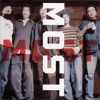 Genre names obviously come to stand for different things over time,usually by becoming broader and broader as they go. What happens,though, when they start to encompass sounds that are pretty muchantithetical to their own roots? It's hard to know what to make of Mostfor exactly that reason: this bunch of 40-something musicians is waytoo good at playing its instruments to really carry the amateur charmof old punk rock, but it can also belt out throat-shredding bulldozersongs like "Shikaku" (from their self-titled first album) on a moment'snotice. Curiously, now that they're specifically identifying theirmusic as "punk," key and tempo changes and other conspicuous signs ofcapable musicianship have started creeping into the works, and thereare even a couple of choruses on Most Mostthat could have been lifted from a Blondie album. (Now that I thinkabout it, that probably says something about how Most fits under thepunk umbrella, too.) The results of my distracted first listening keeptelling me to say that Most Most is a mellower affair than itspredecessor, but it really isn't: it just isn't compressed to hell andmastered at the same ear-splitting levels. Phew manages to rip it upfar better than she ever did as a star of the '70s Japanese punk scene;twenty-five years on, she's given up the dorky beret while keeping thehowling just enough under control that she doesn't sound like an agingmember of some therapeutic drum circle. She's far deadlier and morefocused than Debbie Harry now, and while she'll never exude death likePatti Smith always has, Most have become more than just impressive...they're almost inspiring now.
Genre names obviously come to stand for different things over time,usually by becoming broader and broader as they go. What happens,though, when they start to encompass sounds that are pretty muchantithetical to their own roots? It's hard to know what to make of Mostfor exactly that reason: this bunch of 40-something musicians is waytoo good at playing its instruments to really carry the amateur charmof old punk rock, but it can also belt out throat-shredding bulldozersongs like "Shikaku" (from their self-titled first album) on a moment'snotice. Curiously, now that they're specifically identifying theirmusic as "punk," key and tempo changes and other conspicuous signs ofcapable musicianship have started creeping into the works, and thereare even a couple of choruses on Most Mostthat could have been lifted from a Blondie album. (Now that I thinkabout it, that probably says something about how Most fits under thepunk umbrella, too.) The results of my distracted first listening keeptelling me to say that Most Most is a mellower affair than itspredecessor, but it really isn't: it just isn't compressed to hell andmastered at the same ear-splitting levels. Phew manages to rip it upfar better than she ever did as a star of the '70s Japanese punk scene;twenty-five years on, she's given up the dorky beret while keeping thehowling just enough under control that she doesn't sound like an agingmember of some therapeutic drum circle. She's far deadlier and morefocused than Debbie Harry now, and while she'll never exude death likePatti Smith always has, Most have become more than just impressive...they're almost inspiring now. Read More
- Administrator
- Albums and Singles
 Strange that Z'EV, probably the most recognizeable name in theavant-garde solo-percussionist ranks, with a relatively extensivestring of records behind him, felt the need, in 2003, to release a 3"disc of live recordings from 1993. If nothing else, Live 1993is a lovingly recorded document, captured by friend, collaborator andbrilliant musician in his own right, Fast Forward, at the PerformingGarage New York City. The disc is two tracks, each featuring Z'EVbeating on a variety of objects, ranging from sheets of metal to whatsound like large industrial canisters. Both pieces are dominated byringing metallic hits, with the drummer's complex overlays creating anequally elaborate lattice of quivering drones, the negative spacesurrounding each action nicely accented and enlivened. Z'EV's skills asa polyrhythmist and a composer are apparent here, as on all hisreleases; each track is a concise and expertly controlled example ofhis unique tribal-industrial sound. For a solo performance, thefocused, hypnotic effect achieved is very impressive; however, I see noreason why this music couldn't have been left in the heads of those inattendance. In the context of Z'EV's output thus far, this disc isbeyond inessential; as a 3" disc, it is not long enough to successfullyapproximate the live experience, something that, for an artist likethis, is nearly impossible anyway. New listeners could do better withone of Z'EV's many studio full-lengths, chances to see him workingnon-percussive instruments into his always-interesting sonic palette.
Strange that Z'EV, probably the most recognizeable name in theavant-garde solo-percussionist ranks, with a relatively extensivestring of records behind him, felt the need, in 2003, to release a 3"disc of live recordings from 1993. If nothing else, Live 1993is a lovingly recorded document, captured by friend, collaborator andbrilliant musician in his own right, Fast Forward, at the PerformingGarage New York City. The disc is two tracks, each featuring Z'EVbeating on a variety of objects, ranging from sheets of metal to whatsound like large industrial canisters. Both pieces are dominated byringing metallic hits, with the drummer's complex overlays creating anequally elaborate lattice of quivering drones, the negative spacesurrounding each action nicely accented and enlivened. Z'EV's skills asa polyrhythmist and a composer are apparent here, as on all hisreleases; each track is a concise and expertly controlled example ofhis unique tribal-industrial sound. For a solo performance, thefocused, hypnotic effect achieved is very impressive; however, I see noreason why this music couldn't have been left in the heads of those inattendance. In the context of Z'EV's output thus far, this disc isbeyond inessential; as a 3" disc, it is not long enough to successfullyapproximate the live experience, something that, for an artist likethis, is nearly impossible anyway. New listeners could do better withone of Z'EV's many studio full-lengths, chances to see him workingnon-percussive instruments into his always-interesting sonic palette.Read More
- Taylor McLaren
- Albums and Singles
 This is one of those albums that is bound to prompt a zillion reviewsthat tell the big story of its history: how it was recorded over tenyears ago, how the artist (in this case, the MC, Charizma) died beforeit could be released, and how a friend (the DJ and label founder,Peanut Butter Wolf) eventually put it out as a memorial. It's a nicestory, and there's really no way around it, because there's no otherway of explaining the sound: Big Shots sounds old, and The Arsenio Hall Showcan almost be heard bleeding out of the speakers when it's on, which isa good thing, because it conjures up warm memories of the time rightbefore most rap got stupid. There's no gun-waving or bitch-slappinggoing on here; instead, there's a photo of the title big shots eatingcookies in someone's kitchen, and the lyrics match it. Charizmapractically sits you down on the front steps of his house to tell youabout all of the amazing -stuff- he's seen: ice cream trucks, theneighbourhood drug-dealer getting what's coming to him, the datingscene...! (Yes, an MC that goes out on dates!) Ten years on, the worlddoesn't seem nearly as friendly as it did, and albums as wide-eyed andenthusiastic as I Wish My Brother George Was Here are in shortsupply, making this bright, kind-hearted tribute to a good friend allthe more timely; the fact that the deckwork is fun and the vocals aredeft (Charizma got around the fact that "Explicit Lyrics" stickersstill meant something in '92 by cutting his own curses off mid-wordwithout breaking flow) just seems like a bonus. PS: There are plenty of other samples at the Stones Throw site.
This is one of those albums that is bound to prompt a zillion reviewsthat tell the big story of its history: how it was recorded over tenyears ago, how the artist (in this case, the MC, Charizma) died beforeit could be released, and how a friend (the DJ and label founder,Peanut Butter Wolf) eventually put it out as a memorial. It's a nicestory, and there's really no way around it, because there's no otherway of explaining the sound: Big Shots sounds old, and The Arsenio Hall Showcan almost be heard bleeding out of the speakers when it's on, which isa good thing, because it conjures up warm memories of the time rightbefore most rap got stupid. There's no gun-waving or bitch-slappinggoing on here; instead, there's a photo of the title big shots eatingcookies in someone's kitchen, and the lyrics match it. Charizmapractically sits you down on the front steps of his house to tell youabout all of the amazing -stuff- he's seen: ice cream trucks, theneighbourhood drug-dealer getting what's coming to him, the datingscene...! (Yes, an MC that goes out on dates!) Ten years on, the worlddoesn't seem nearly as friendly as it did, and albums as wide-eyed andenthusiastic as I Wish My Brother George Was Here are in shortsupply, making this bright, kind-hearted tribute to a good friend allthe more timely; the fact that the deckwork is fun and the vocals aredeft (Charizma got around the fact that "Explicit Lyrics" stickersstill meant something in '92 by cutting his own curses off mid-wordwithout breaking flow) just seems like a bonus. PS: There are plenty of other samples at the Stones Throw site.Read More
- Administrator
- Albums and Singles
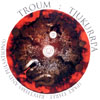 Troum's final part in their Tjukurrpa series comes with its own warning right in the title. Those familiar (and fond of) the powerful drones this German duo is famed for might be taken aback by the prominence of both rhythms and pulsations all over the record.Transgredient
Troum's final part in their Tjukurrpa series comes with its own warning right in the title. Those familiar (and fond of) the powerful drones this German duo is famed for might be taken aback by the prominence of both rhythms and pulsations all over the record.Transgredient
From the opening "Ignis Sacer," the percussion takes the center stage, with a harsh and abrasive loop. Throughout the disc, the rhythmic loops get decreasingly harsh, lending more to the open drones the group is known for. Like the first two in the trilogy, part three was recorded over a period of time, which may account for somewhat of an uneven sound between tracks in comparison to last year's Siquan.
The firt two tracks go on painfully long and are sadly lacking in a depth I have come to expect from Troum due to a sound that is primarily in mono. By track three, "Saiwala," the rhythms have become less piercing but provided by pounding drums in a very Non/Death In June vein. However, at least Boyd and Doug knew how to end a song quickly (at this time the tracks are going on way too long).
It isn't until the fourth song, "W√°ian / Moys," that the music truly connects with me by the inclusion of faint vocals by a girl named Nina and a motioned progression that is quite the opposite from the somewhat painful first three tracks. It's at this point a good stereo separation also takes place. Slight pitch bends and thunderous echoes are hypnotic and warmly welcomed. Time seems to stand completely frozen.
True melodic movement comes through in the haunting follower "Reigen Taumelnder Geister," the reverse rhythms of "Wheaio," and mystical moonlit midnight music of "Airpeins." Perhaps some of the Eastern themes present could be a nod to Muslimgauze or Rapoon, or the group is getting ready to score an epic. Either way, for a disc whose opening half I completely hated, it surprisingly goes out fantastically well.
Read More
- Administrator
- Albums and Singles
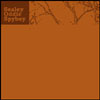 There is a point where sound collages become something else. Dronesstop being merely drones and the cinematic passing of sounds build intoan architecture without shape or form. Christina Sealey, Richard Oddie,and Mark Spybey have consecrated the air about my ears and formedaround it a liquid curtain of sudden memories and vague communicationsfrom the mystical side of dreams. SOSisn't a drone record and it isn't just a collage of sounds, it feelsmore like a movie meant to convey some central ideas. Drowning bells,all-knowing monks, and the enchantment of sirens act as a thematicmarker by which ventures into the unknown take place. The sounds arenever reduced to a pure humming, nor are there any moments where theflooding of sound meshes into an unidentifiable mass. Sounds act asindividual instruments; whether it's the beat of a heart or therotation of blades on an enormous fan, there's always a sense ofgeneral organization between sounds. The group isn't afraid to includefamiliar sounds in their landscape of the strange. Everything fromdistorted radio signals and the cold delivery of a news anchor's voiceto what might be a digeridoo can be found somewhere in the haze ofsonic manipulation. Melodies unfold for small portions of time andrhythm can be picked out of certain pieces, but nothing on SOSrelies on either. I'm incredibly taken by this disc because I find itto be more than impossible to catergorize. Noise, drone, ambient, blah,blah, blah; none of it fits this disc in any way conceivable. Callingit a sound collage ignores the precise way the sequence of tracksplayed with my head and provided at least an illusion of structure andinsight. I wouldn't say this is something drastically new or unique;considering Spybey's long history with sound, I doubt that there aren'tsome familiar themes or ideas at work here, but the entire recordsounds and feels fresh. It deserves and, by way of mystical suggestion,demands repeat listens.
There is a point where sound collages become something else. Dronesstop being merely drones and the cinematic passing of sounds build intoan architecture without shape or form. Christina Sealey, Richard Oddie,and Mark Spybey have consecrated the air about my ears and formedaround it a liquid curtain of sudden memories and vague communicationsfrom the mystical side of dreams. SOSisn't a drone record and it isn't just a collage of sounds, it feelsmore like a movie meant to convey some central ideas. Drowning bells,all-knowing monks, and the enchantment of sirens act as a thematicmarker by which ventures into the unknown take place. The sounds arenever reduced to a pure humming, nor are there any moments where theflooding of sound meshes into an unidentifiable mass. Sounds act asindividual instruments; whether it's the beat of a heart or therotation of blades on an enormous fan, there's always a sense ofgeneral organization between sounds. The group isn't afraid to includefamiliar sounds in their landscape of the strange. Everything fromdistorted radio signals and the cold delivery of a news anchor's voiceto what might be a digeridoo can be found somewhere in the haze ofsonic manipulation. Melodies unfold for small portions of time andrhythm can be picked out of certain pieces, but nothing on SOSrelies on either. I'm incredibly taken by this disc because I find itto be more than impossible to catergorize. Noise, drone, ambient, blah,blah, blah; none of it fits this disc in any way conceivable. Callingit a sound collage ignores the precise way the sequence of tracksplayed with my head and provided at least an illusion of structure andinsight. I wouldn't say this is something drastically new or unique;considering Spybey's long history with sound, I doubt that there aren'tsome familiar themes or ideas at work here, but the entire recordsounds and feels fresh. It deserves and, by way of mystical suggestion,demands repeat listens.Read More
- Administrator
- Albums and Singles
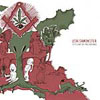 No doubt in response to the reception of last year's Tasheyana Compost, Infrasound has reissued USAISAMONSTER's previous two vinyl releases on a single disc. Anyone pleased with Compost'smuddy conglomerate of duo-blasted noise rock and prog-metal will feelequally at home in the arms of this beast, the lager-soaked pilgrim toits successor's war-weary Cherokee. The slick guitar chops are stillthere, each song still a many-armed mini-epic, but Citizenspreserves every piece of fudged riffage, every rhythmic stumble, andevery indulgent stomp-a-long bit, imbuing each with uncorruptedconviction, a metalhead's glee. It's not that these early releases showthe group in crude or undeveloped form (they are tighter than ever), oreven that their newer full-length represents a "softening" of theirsound; Citizens merely proves that these guys were thrashing tothe SST catalog long before they discovered Hawkwind. The disc offersthe more accurate and more thrilling picture of a band whose reputationhas rightfully developed around a blaring, overblown live event. Theguitars are a little less likely to dip into the angular jazz-istpatterns scattered throughout Compost, preferring close-croppedriffs and assaulting repetition, breakdowns occurring only when thetension and release of the figures buckles under the speed of eachsong. Songs themselves cater less to the wayward theatrics of thesucceeding album, and while some acoustic troubadouring does crop up,these songs (especially those from 2001's Citizens of the Universe)are more like spliced chains of 2-min. thrash anthems, worked togetherwith the occasional staggered metallic breather. I feel comfortablesaying that if Compost was not your air-drums record of the year, this surely will be. For all of its force, Citizens stays fun throughout and should be welcomed by new fans who were dismayed to find the original records unavailable.
No doubt in response to the reception of last year's Tasheyana Compost, Infrasound has reissued USAISAMONSTER's previous two vinyl releases on a single disc. Anyone pleased with Compost'smuddy conglomerate of duo-blasted noise rock and prog-metal will feelequally at home in the arms of this beast, the lager-soaked pilgrim toits successor's war-weary Cherokee. The slick guitar chops are stillthere, each song still a many-armed mini-epic, but Citizenspreserves every piece of fudged riffage, every rhythmic stumble, andevery indulgent stomp-a-long bit, imbuing each with uncorruptedconviction, a metalhead's glee. It's not that these early releases showthe group in crude or undeveloped form (they are tighter than ever), oreven that their newer full-length represents a "softening" of theirsound; Citizens merely proves that these guys were thrashing tothe SST catalog long before they discovered Hawkwind. The disc offersthe more accurate and more thrilling picture of a band whose reputationhas rightfully developed around a blaring, overblown live event. Theguitars are a little less likely to dip into the angular jazz-istpatterns scattered throughout Compost, preferring close-croppedriffs and assaulting repetition, breakdowns occurring only when thetension and release of the figures buckles under the speed of eachsong. Songs themselves cater less to the wayward theatrics of thesucceeding album, and while some acoustic troubadouring does crop up,these songs (especially those from 2001's Citizens of the Universe)are more like spliced chains of 2-min. thrash anthems, worked togetherwith the occasional staggered metallic breather. I feel comfortablesaying that if Compost was not your air-drums record of the year, this surely will be. For all of its force, Citizens stays fun throughout and should be welcomed by new fans who were dismayed to find the original records unavailable. Read More
- Administrator
- Albums and Singles
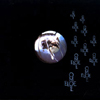 Rising from the brittle crust of the same Northeastern coast thatbirthed labelmates USAISAMONSTER, Eloe Omoe is a duo of considerablyless refinement. While their aesthetic is likely to find support in theRuins/Lightning Bolt camp, the band comes off sounding so elementalthat I worry they have compromised themselves by cutting a record atall. This 12", their first release, contains five live tracks: meresnippets or little windows into what seem less like a few scatteredshows between '99 and '01 than random stops along an un-halting,nomadic traversal of New England, powered by a vaguely primitiveimpulse, unseen, unknown, and nearly lost on these recordings. Themusic is a tumbling, thoroughly abstract mess of effected bass rumble,draped with drum parts that descend, deconstruct, and fall apart toinvisible cues. All five pieces sound improvised, the two playersrarely coming together for anything "thematic" to emerge; the onlyclear indications that they are not playing in different rooms are afew abrupt stops and a unified effort to keep the songs in a kind ofperpetual collapse. The recording is understandably of poor quality,and, while bands like Lightning Bolt and USAISAMONSTER might haverigorous structures or goofy posturing to compensate, Eloe Omoe suffersmore openly. Theirs is really more of a jazzist take on the noise rockgame, and as such, the music's visceral, performative nature becomes alarge part of its appeal, lost on such a recording. Again, fans of agrassroots noise aesthetic will appreciate the record, Sam Rowell'ssqualling bass in particular, though I'd be interested to see how alittle studio tweaking would effect the group's sound, for better orworse.
Rising from the brittle crust of the same Northeastern coast thatbirthed labelmates USAISAMONSTER, Eloe Omoe is a duo of considerablyless refinement. While their aesthetic is likely to find support in theRuins/Lightning Bolt camp, the band comes off sounding so elementalthat I worry they have compromised themselves by cutting a record atall. This 12", their first release, contains five live tracks: meresnippets or little windows into what seem less like a few scatteredshows between '99 and '01 than random stops along an un-halting,nomadic traversal of New England, powered by a vaguely primitiveimpulse, unseen, unknown, and nearly lost on these recordings. Themusic is a tumbling, thoroughly abstract mess of effected bass rumble,draped with drum parts that descend, deconstruct, and fall apart toinvisible cues. All five pieces sound improvised, the two playersrarely coming together for anything "thematic" to emerge; the onlyclear indications that they are not playing in different rooms are afew abrupt stops and a unified effort to keep the songs in a kind ofperpetual collapse. The recording is understandably of poor quality,and, while bands like Lightning Bolt and USAISAMONSTER might haverigorous structures or goofy posturing to compensate, Eloe Omoe suffersmore openly. Theirs is really more of a jazzist take on the noise rockgame, and as such, the music's visceral, performative nature becomes alarge part of its appeal, lost on such a recording. Again, fans of agrassroots noise aesthetic will appreciate the record, Sam Rowell'ssqualling bass in particular, though I'd be interested to see how alittle studio tweaking would effect the group's sound, for better orworse. Read More

